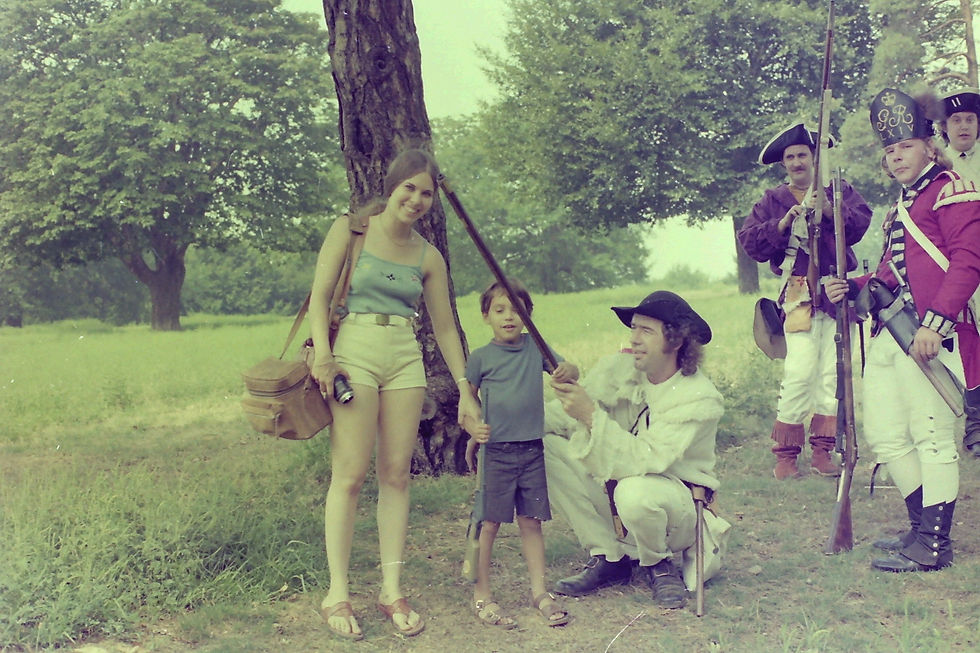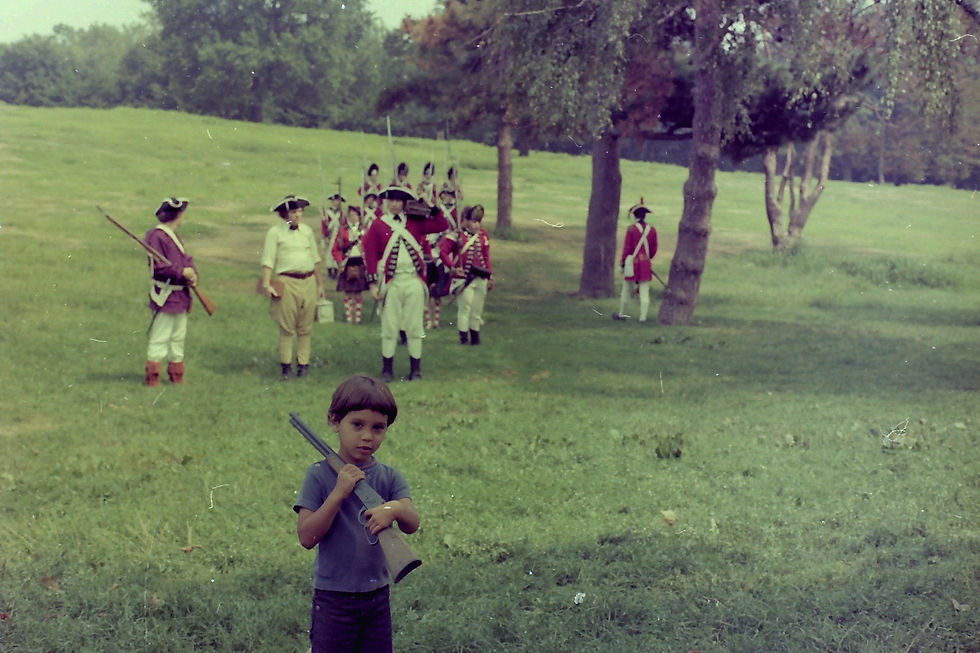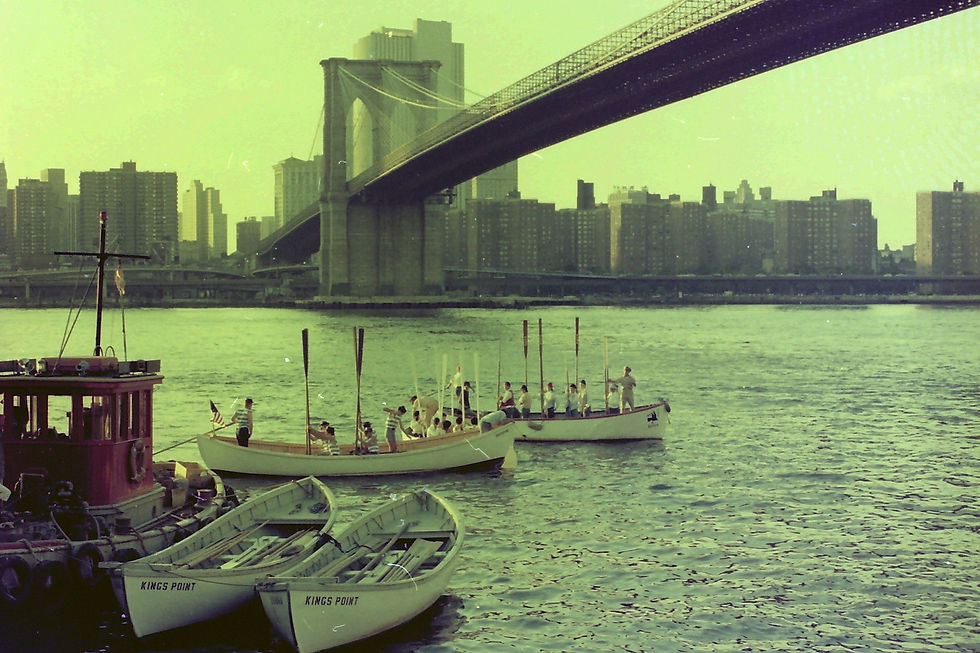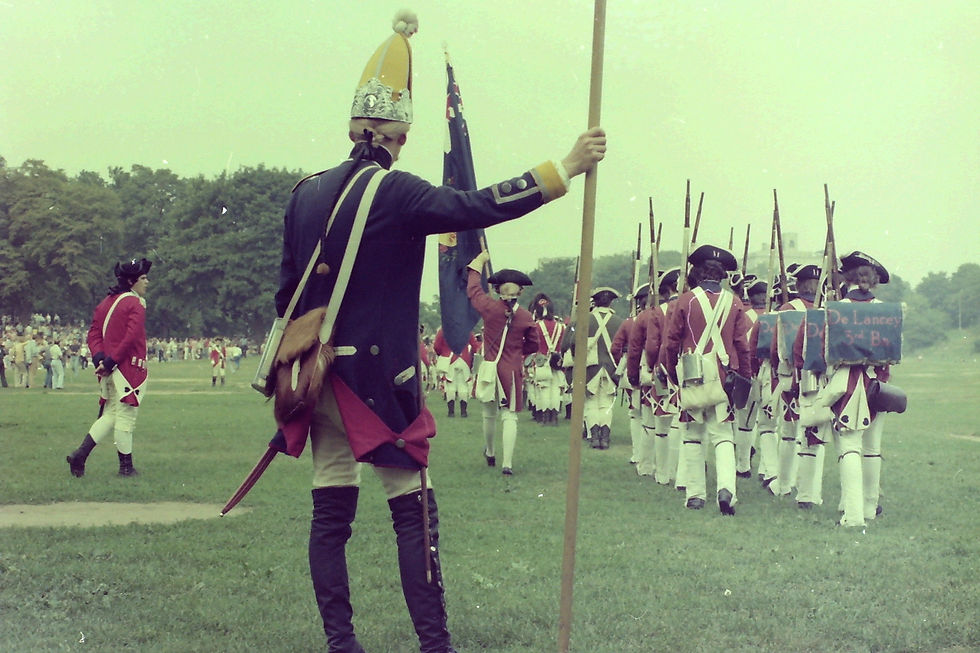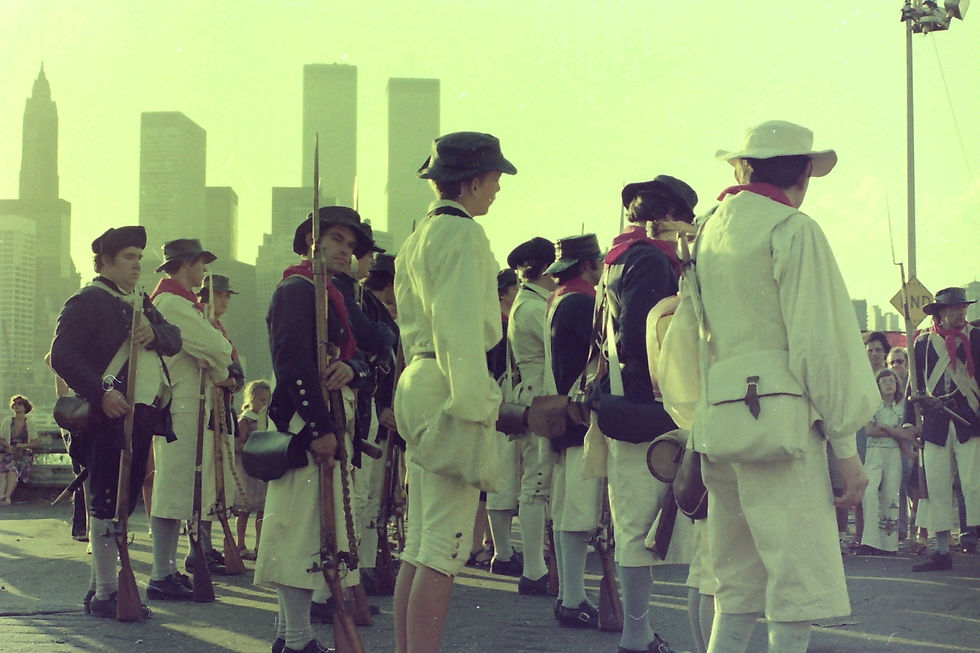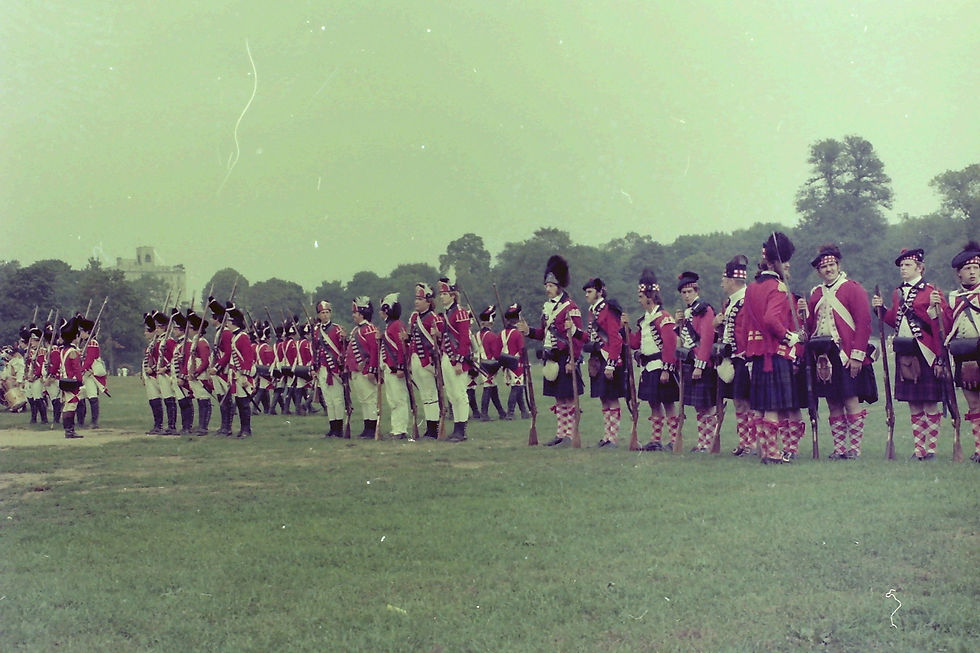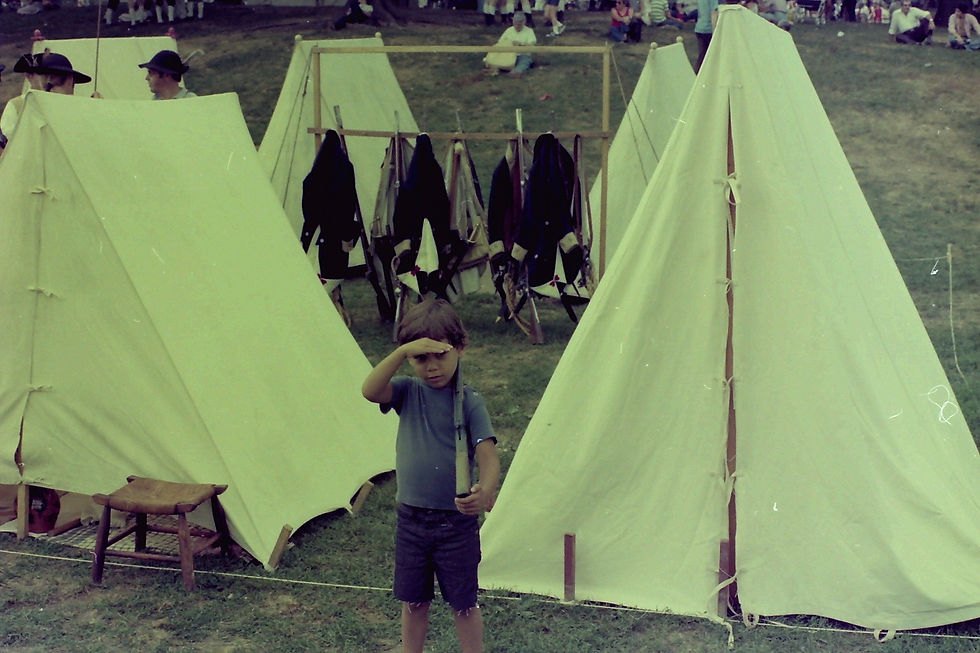The Battle of Brooklyn
The American colonies had been in rebellion for 3 years against the British Crown, but when the Declaration of Independence was signed and declared the United States of America an independent nation, the British knew they had to act.
So they sent their army & navy to destroy this new nation. In stages ships began to arrive in New York harbor and by August 12th, 1776 over 400 ships, including 73 war ships, and 32,000 troops were camped on Staten Island.
To the simple farmers in Sunset Park (Gowanus) it looked like hundreds of clothes lines had been strung throughout the bay with thousands of white sheets flapping in the wind. It was frightening, families hid their valuables, some went into hiding and others hunkered down for the invasion.
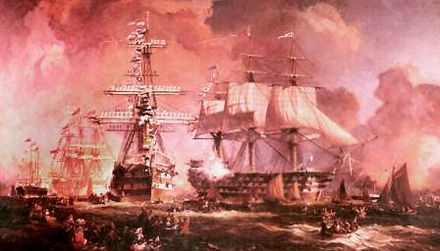
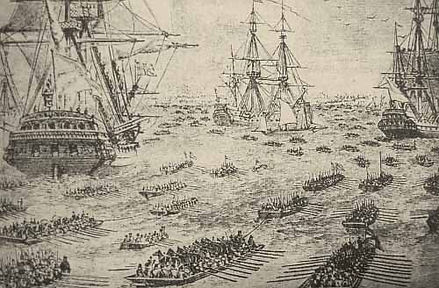
The British Navy was headed by Admiral Howe and his brother - General Howe was in charge of the land forces.
In 1664, the British invaded here to take New York from the Dutch. They landed on Staten Island and then came across in Bay Ridge and then marched along the west shore of Brooklyn - on the only road - the Gowanus Road to head to downtown Brooklyn and then across to Manhattan. In 1664, the Dutch surrendered without a shot being fired.
General Washington, in charge of the American Army, expected the British would follow their old strategy now a little over a hundred years later.
The British plan was to play it safe. They outnumbered the Americans by 2 to 1 in soldiers, had the greatest navy in the world and wanted to get this done with the loss of as few of their men as possible. So they landed on the safe island of Staten - a rural area with no defenses and supporting the British.
They would mass their troops, get everything ready and then invade Bay Ridge/Fort Hamilton. which they began on August 22nd. The landing was so uneventful that British soldiers jumped off the ships and ran to the apple trees and feasted until their bellies hurt.
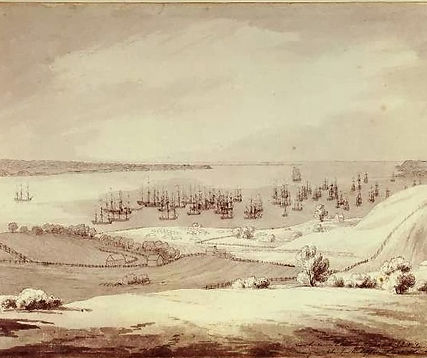

But the British were going to be tricky this time:
1. They would camp in Bay Ridge.
2. They would leave their camp fires lit and tents up and sneak off silently at 9pm.
3. One portion of their army would go down the Gowanus Road through Sunset as Washington expected.
4. Another would go through the center of Brooklyn - the Flatbush Pass.
5. The real attack would go all the way east to the Queens border and come around behind Washington.
6. Washington would see the army coming up the Gowanus and attack...
a. But the extra British from the Flatbush Pass would join the Gowanus Road army and attack back.
b. And in the middle of the fight the main army would come up behind Washington and trap him.
7. The revolution would be over in just one day.
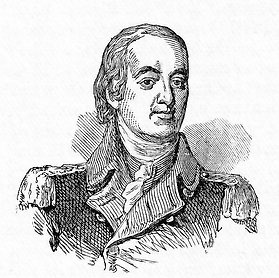
But the British plan didn't count on one thing - a man named William Alexander - or also known as Lord Stirling.
Washington put him in charge of a small group of soldiers from Maryland to protect the Gowanus Road. This was a very important assignment since Washington expected the attack from there. He put less soldiers to protect the Flatbush Pass and just a few men to watch the Jamaica Pass near the Queens border - he never expected the British to come that way.
Today (August 27th, 1776) events in Sunset Park would change the future of the entire world....and it all began by the Sunset Park Historic Boulder
As the British reached reached 37th Street and 4th Avenue - the Red Lion Inn, two British soldiers began collecting watermelons (it was still August 26th at 11pm). Some Americans at the Inn heard them and fired upon them. By 1am a few hundred British & Hessians (hired professional German soldiers) approaching the Red Lion Inn were engaged by a few Americans.
The fighting continued with the Americans falling back to where Lord Stirling was in command of about 1,600 troops. But they were outnumbered two to one. Stirling attempted to hold the ground along the 5th Avenue side of Greenwood Cemetery. Several times, though outnumbered Stirling's men pushed the British back and regained the high ground, but being out numbered they could not hold the ground.
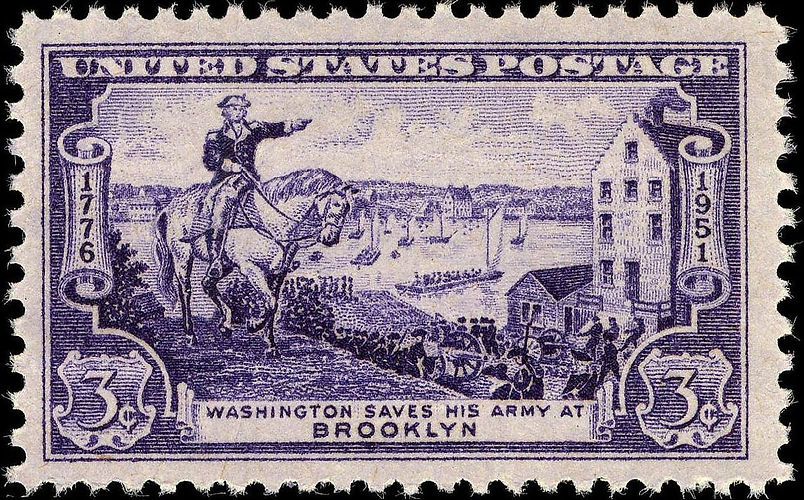
While Lord Stirling's men - many from Maryland, fought a desperate fight, General Washington began to realize the need for more troops and so he brought more of his army to Brooklyn from Manhattan. His army was in bad shape due to illness, but they prepared for a major battle.
One thing, and only one thing, went wrong for the British - the soldiers from Maryland, under Lord Stirling did not fall back to join the main force - they fought to their death and without realizing it, delayed the British plan.
Too much time had passed for the three British columns to join up and attack the main Americans in Brooklyn Heights - so General Howe decided to stop and take a break and attack fresh the next day.
But bad weather delayed the next day's attack and also kept the British ships from getting into the East River behind Washington. Washington realized his only hope was to escape. He quietly withdrew his army in total silence to Manhattan. Not only did all of his men escape, but they took all their cannons and horses. And they even took their supplies stored on Nutt Island (Governor's Island). When the weather cleared and General Howe attacked - he found empty fortifications.
Now the big question - why did Stirling fight so hard, why did he drive his men to their death?
For the answer, you would have to go back another 150 years and no other historian will share this story with you, just me.
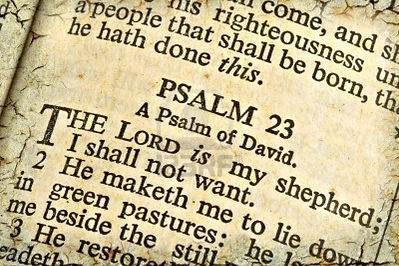

All of Lord Stirling's men were killed or captured. Since Stirling was an officer he was not killed, nor kept in a sickening, deadly, infectious prison ship. He was kept in nice quarters and later traded for British captives.
Most of his soldiers died as they tried to escape in the swampy mud of Red Hook. Many shot in the back. Those that survived later died on disease filled prison ships.
And today they lay in an unmarked grave - possibly in the parking area of a car repair shop around 11th Street. But Sterling has streets named for him and even Middle School 51.
In the early 1600's King James of England wanted to publish an English version of the Holy Bible. He hired various translators to work on different books.
He selected a gifted writer - William Alexander to work on the Book of Psalms. Yes, when we read "The Lord is my shepherd..." it is his English translation of the Latin & Hebrew versions.
His work so pleased King James (yes, the Bible is called the King James Bible of 1611) that the King gave Mr. Alexander a title - Lord Stirling. And he gave him property in the "new" world - the Long Island.
But William Alexander wasn't interested in this, he was a writer, a free spirit - maybe even his work with the Bible made him a more spiritual person. So he never took advantage of his property and failed to collect rents and eventually the property was given by another King to the Duke of York (yes, that is why this is New York).
But in the mid-1700's, the descendant of the first William Alexander wanted to claim Long Island and he wanted the title Lord Stirling.
So he asked for an audience with the King - King George, and it was granted. But when he appeared before the court and asked to reclaim his property he was denied.
This so angered him that he became a hardened opponent when King George sent his troops to fight Washington.
Maybe, just maybe, this is why he fought with such tenacity.
Can I prove this? No. Can I say this - YES.

An account from Wikipedia:
Stirling ordered all of his troops, except a contingent of Maryland troops under the command of Major Mordecai Gist, to cross the creek. This group of Maryland troops became known to history as the "Maryland 400", although they numbered about 260–270 men. Stirling and Gist led the troops in a rear-guard action against the overwhelming numbers of British troops which surpassed 2,000 troops supported by two cannons. Stirling and Gist led the Marylanders in two attacks against the British who were in fixed positions in and in front of the Vechte-Cortelyou House (known today as Old Stone House). After the last assault, the remaining troops retreated across the Gowanus Creek. Some of the men who tried to cross the marsh were bogged down in the mud under musket fire and others who could not swim were captured. Stirling was surrounded and, unwilling to surrender to the British, broke through the British lines to von Heister's Hessians and surrendered to them. Two hundred fifty-six Maryland troops were killed in the assaults in front of the Old Stone House, and fewer than a dozen made it back to the American lines. Washington, watching from a redoubt on nearby Cobble Hill (intersection of today's Court Street and Atlantic Avenue), reportedly said, "Good God, what brave fellows I must this day lose."
